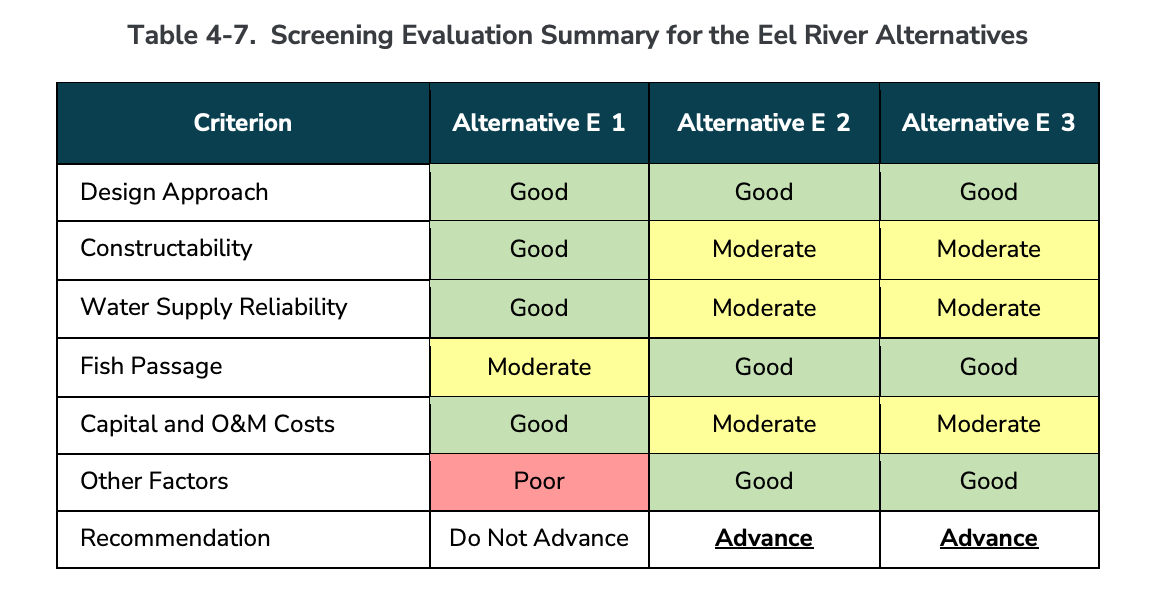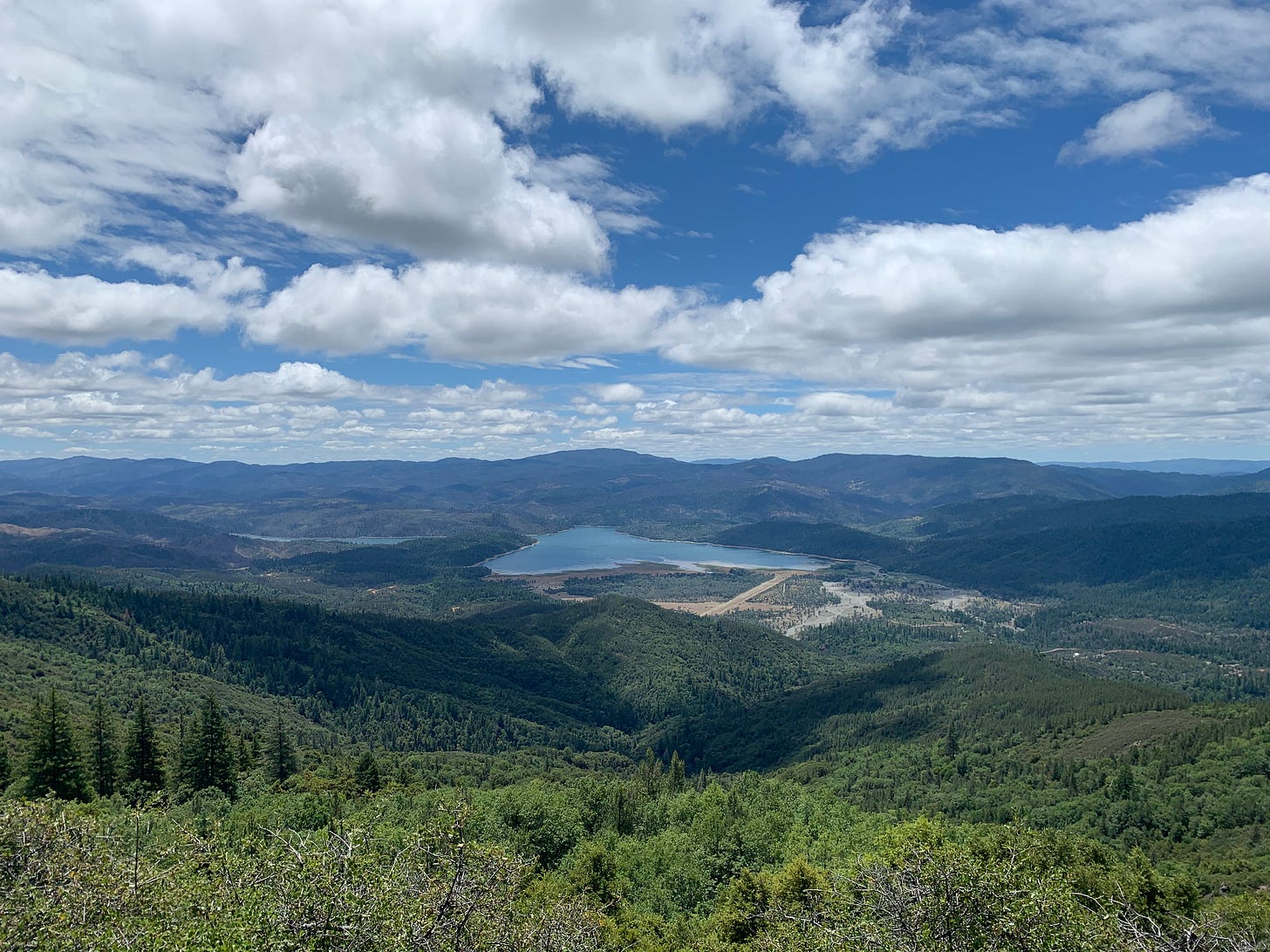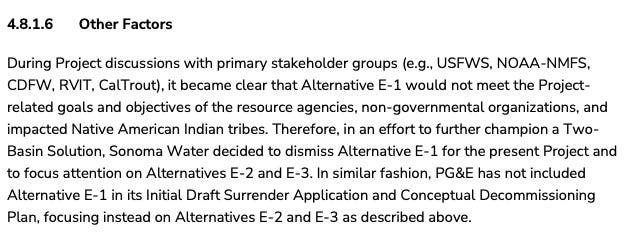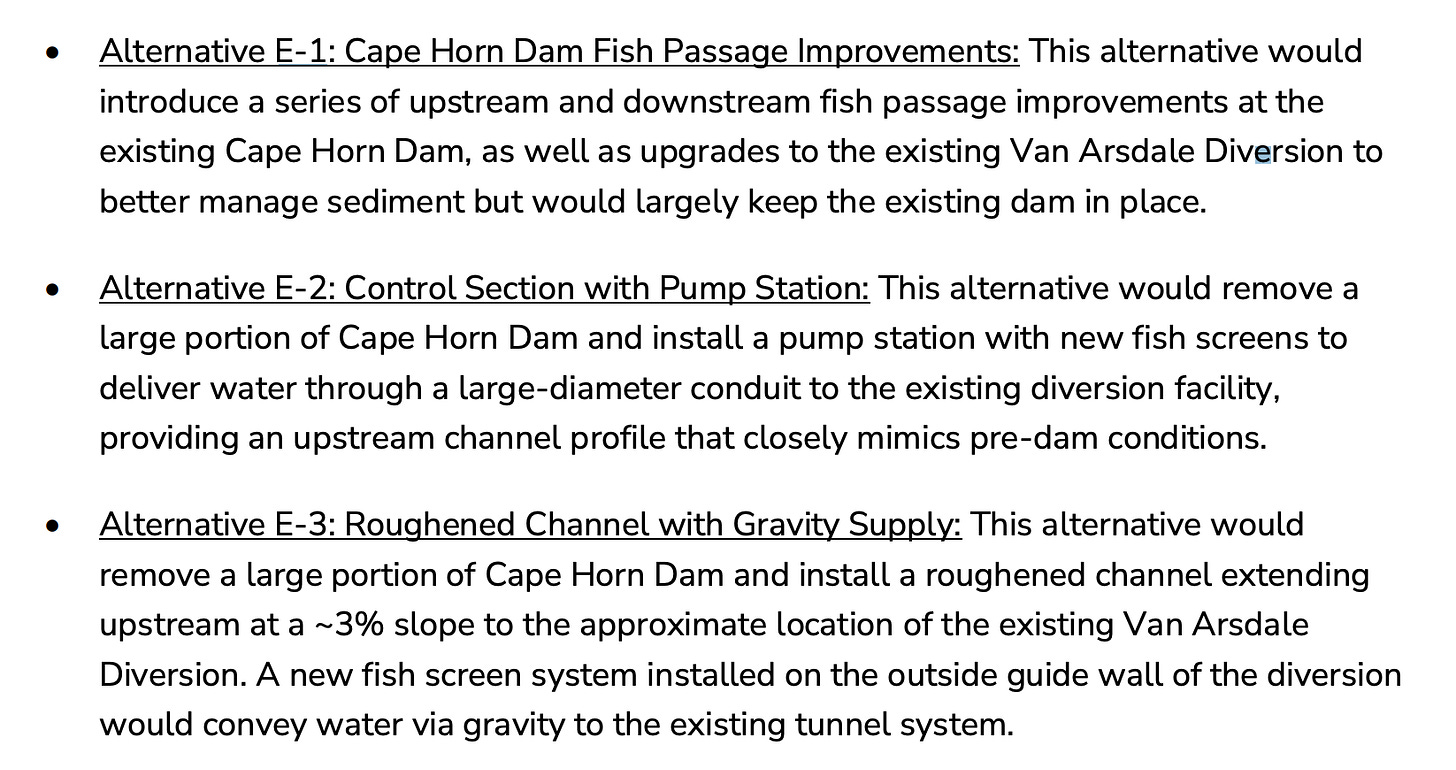EXPLOSIVE: Sonoma County report concludes keeping Eel River dam best for community but fails NGO/government "goals"
What's more important than water? Keeping the Eel River dam is the only plan that provides a reliable water supply, but it was canned after secretive "discussions" with special interest groups.
Buried in the Sonoma Water Report is an admission many of the 600,000 citizens who rely on the Potter Valley Project—two century-old dams on the Eel River slated for decommissioning by Pacific Gas & Electric (PG&E)—may find shocking.
The report concludes the best solution for the community is to keep the Cape Horn Dam in place, but this option was canned after “discussions” with special interest groups including government agencies and NGOs.
What could be more important than water?
The 453-page report examines three alternatives. Alternative E-1 is to upgrade and keep the existing Cape Horn Dam. The other two involve largely removing the dam.
This option ranks Good or Moderate on every metric except “Other Factors,” defined loosely as PG&E’s plans to surrender the dams and unspecified “goals and objectives” of special interest groups.
After “discussions with stakeholders,” Sonoma Water abandoned Alternative E-1. The contents of these discussions are not included, and the 600,000 people who will lose their water supply were not represented.
Instead of citizens, voters, or elected representatives, these “stakeholders” include CalTrout, Round Valley Indian Tribes, California Department of Fish and Wildlife (CDFW), and U.S. Fish & Wildlife.

Sonoma Water abandons E-1 despite it being the best alternative for water supply reliability, cost, and construction. The rest of the 453-page report focuses on the two remaining options. The report adds that PG&E has also abandoned E-1.
Are these NGOs & special interest groups set to financially benefit from dam removal?
In February, several parties signed a ceremonial Memorandum of Understanding (MOU) regarding the future of the Eel River dams. The parties include CalTrout, Trout Unlimited, Round Valley Indian Tribes (RVIT), California Department of Fish and Wildlife (CDFW), and Sonoma Water. The MOU is a legally non-binding statement of intent.
CDFW committed $18 million to the partnership, including $9 million toward the Eel River Restoration Fund. Water users will pay into this fund, between $750,000 and $1 million a year. CalTrout and other NGOs could potentially receive portions of this fund.
The MOU also lays out how PG&E will turn over water rights to Round Valley Indian Tribes once the dams are removed. RVIT will then receive up to $2 million a year in payments for leasing that water back to Russian River water users.
For the unspecified priorities of groups who stand to financially gain should this important rural water infrastructure be removed to have a seat at the table for discussions about the future of that infrastructure, while taxpayers and community members who will lose water are excluded from participation, seems like a fairly blatant conflict of interest. This is particularly true if the approval of those special interest groups was the deciding factor in axing an otherwise ideal solution for water reliability and burden on taxpayers.
The implied goal of the MOU, according to Friends of the Eel, is to end all water diversions to Russian River water users entirely in the next 50 years.
Tribes and Rural Communities “Marginalized,” Excluded from Discussions
At the Cloverdale Town Hall on March 20, Lake County Supervisor and vice chair of the Robinson Rancheria Tribe of Pomo Indians Eddie “E.J.” Crandell made it clear: North Coast tribes are not monolithic in their interests or their perspective on dam removals.
The Round Valley Indian Tribes (RVIT) are the only tribal group represented in the Sonoma County Water report. RVIT is the only tribe that publicly supports removing the dams.
Tribes that rely on water from the Potter Valley Project were excluded from the conversation and were not considered “stakeholders.”
“They’re only talking about the Round Valley Indian Tribe, who is on the Eel River side,” Crandell said. “I would never try to speak for them or any other tribe…I can’t even speak for my tribe because I still need two votes just like any other government. But there are way more tribes.”
Crandell said Lake County, which he represents, was “marginalized” in the discussion, excluded from the table. Lake Pillsbury is located in Lake County.
“We wanted to know more, we wanted to say more,” Crandell said. Crandell and his fellow supervisors tried to include the Lake Pillsbury Alliance, a local advocacy group started by concerned citizens, in meetings “only to be marginalized by other interest groups, NGOs.”

Earlier this month, Crandell and the Lake County Board of Supervisors wrote a letter to the Trump Administration asking the president’s team to intervene in protecting the Eel River dams and the communities affected by them.
The letter reads in part,
Scott Dam has been operated for over 100 years; located on the Eel River, whose headwaters are in Lake County, the dam forms Lake Pillsbury. The Eel River eventually flows into the Pacific Ocean. Estimated costs of removing this dam, including early figures for mitigation and restoration, could exceed $500 million.
Lake Pillsbury is a destination for hunting, fishing, camping, hiking, and more. It also holds water storage that helps to keep the Eel River from running dry every year, especially during drought years. The Potter Valley Project allows for water diversion further down the Eel River and into the Russian River basin to provide water for agricultural use and drinking water for about 600,000 people in Northern California. The water storage has also been utilized to fight fires in the wilderness surrounding it, Mendocino National Forest. Two of the three largest wildfires in the state of California occurred in the areas surrounding Lake Pillsbury, each within the past decade…Decommissioning of the dam would put regional agriculture, fire protection, water availability, and our tourism economy at great risk.
Three alternatives examined
The three options for the Potter Valley Project examined by Sonoma Water are described on page xii of the report. E-1 would add fish passage improvements and other upgrades but would leave the existing Cape Horn Dam largely as-is. E-2 would remove much of the Cape Horn Dam and install a pump station to move water through the diversion facility. E-3 would remove much of the Cape Horn Dam and add an additional channel to the diversion.









The Round Valley Indian Tribe, CalTrout, Fish & Wildlife, and the NGOs (please list them), are on my shit list.
https://lostcoastoutpost.com/2025/apr/9/farm-bureaus-russian-river-counties-issue-plea-pre/